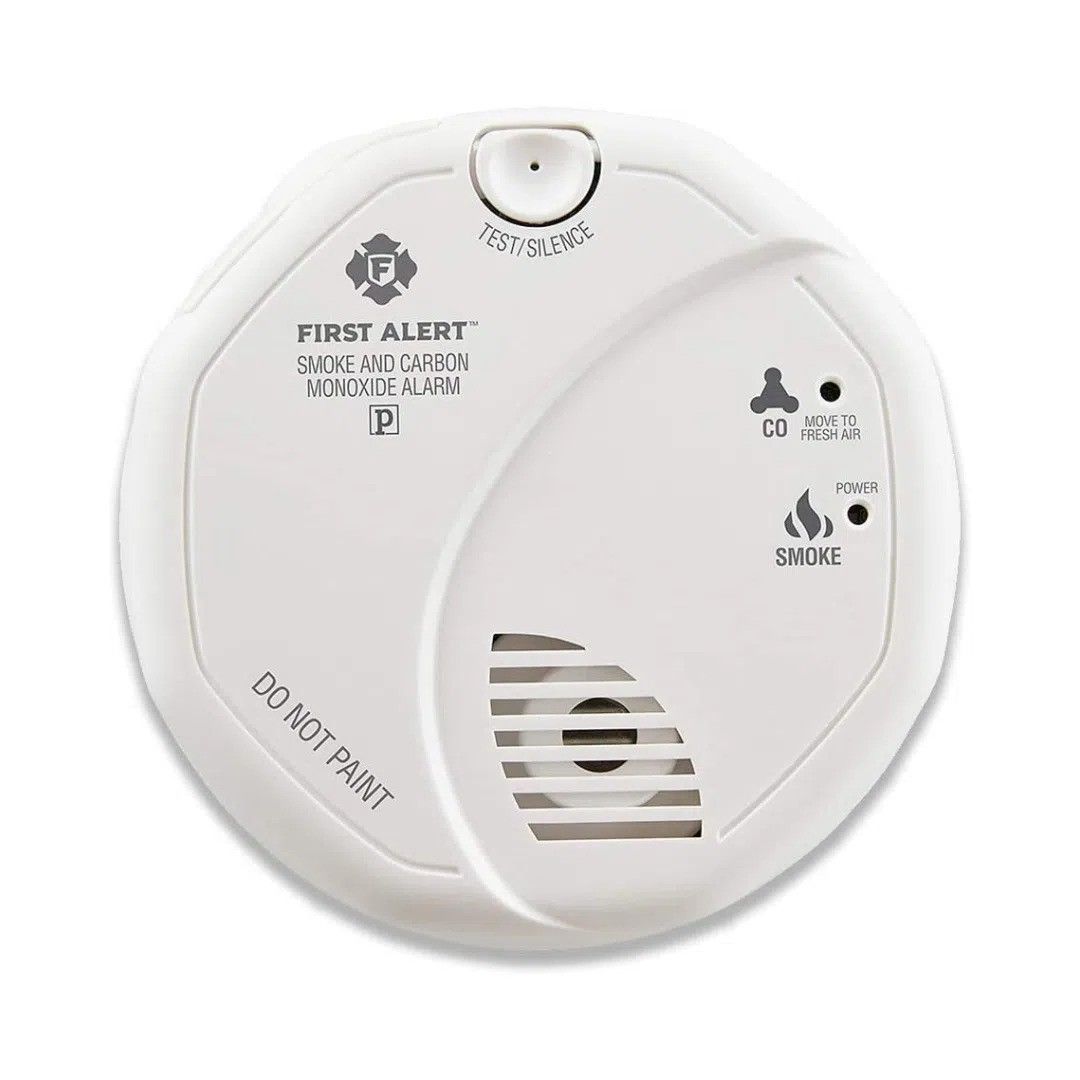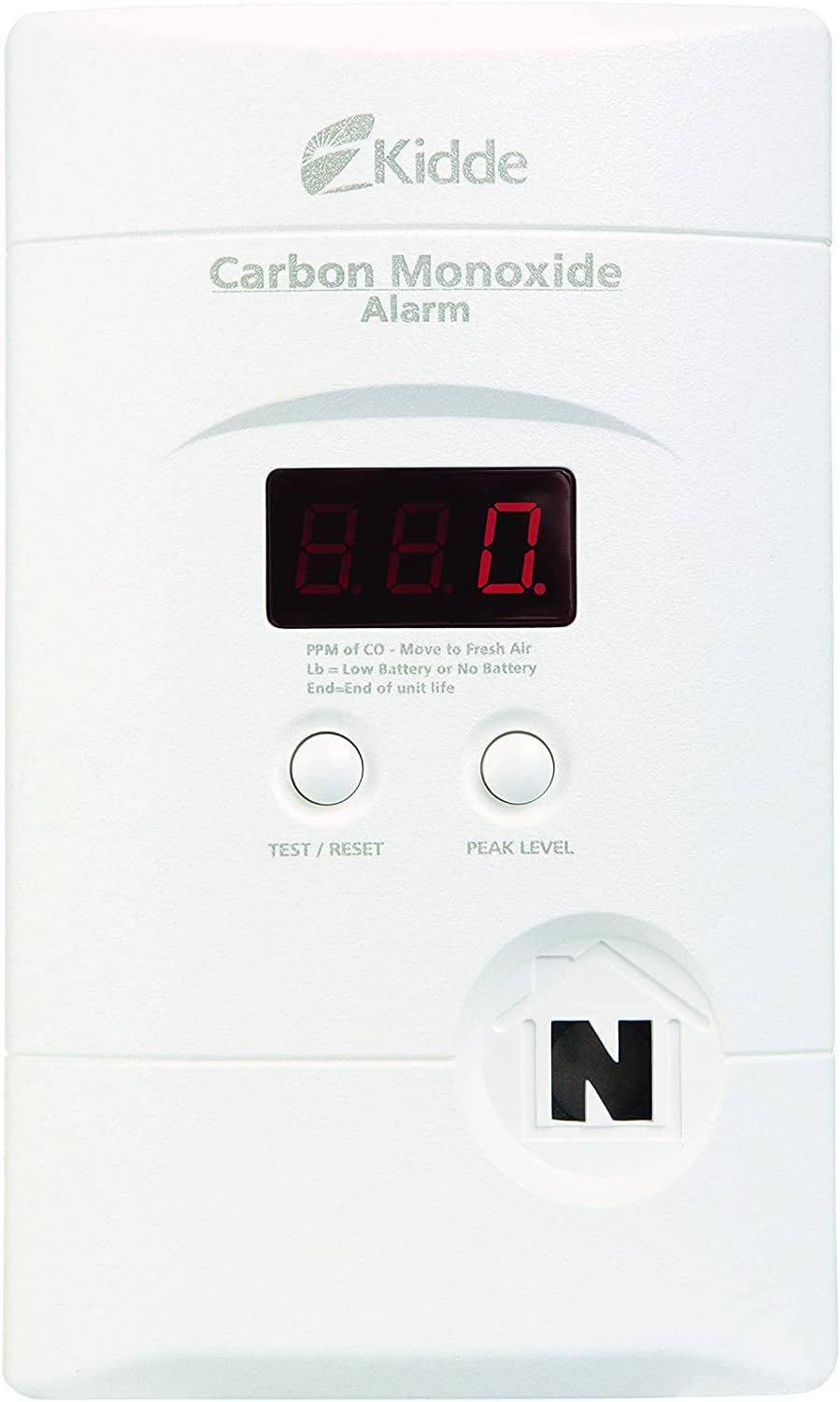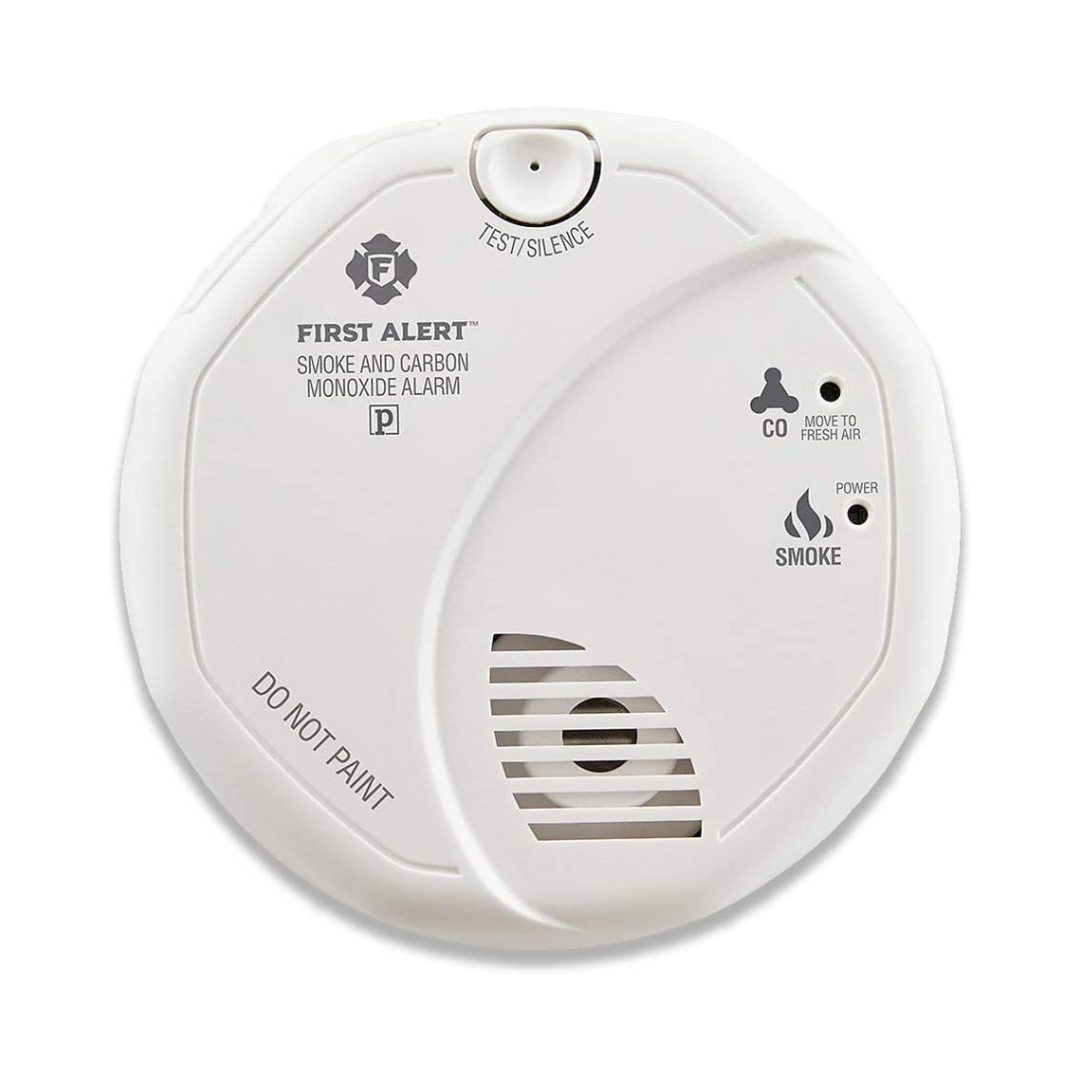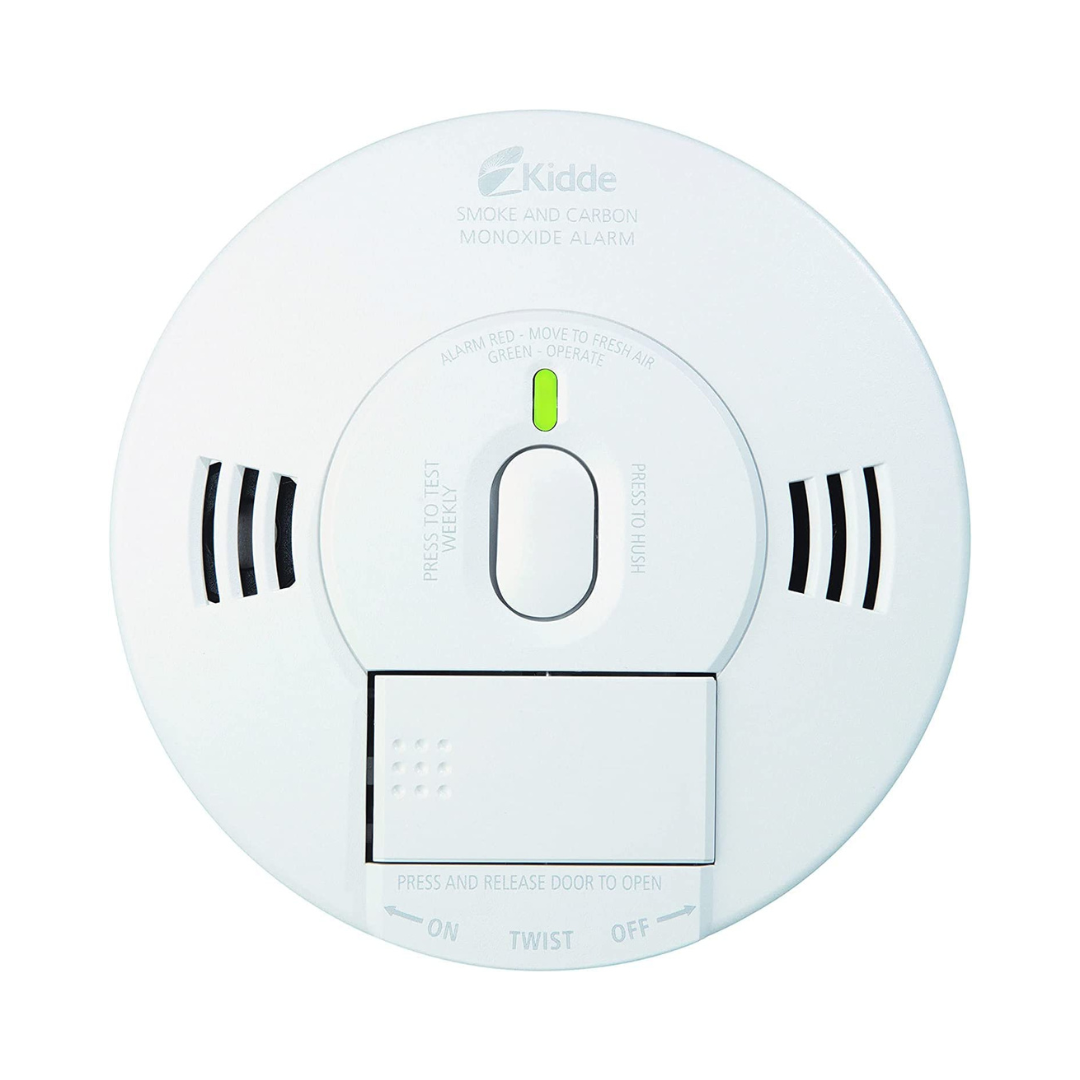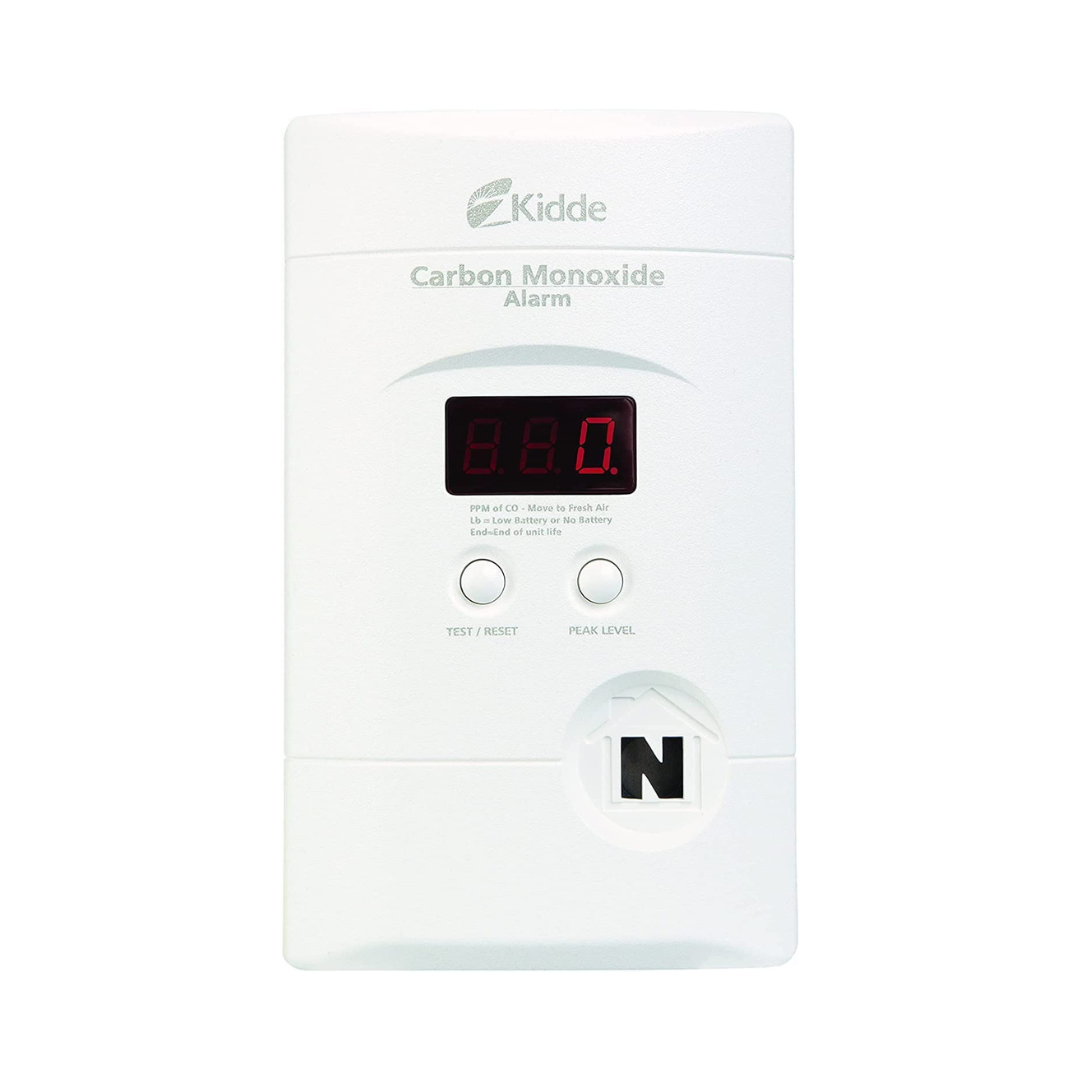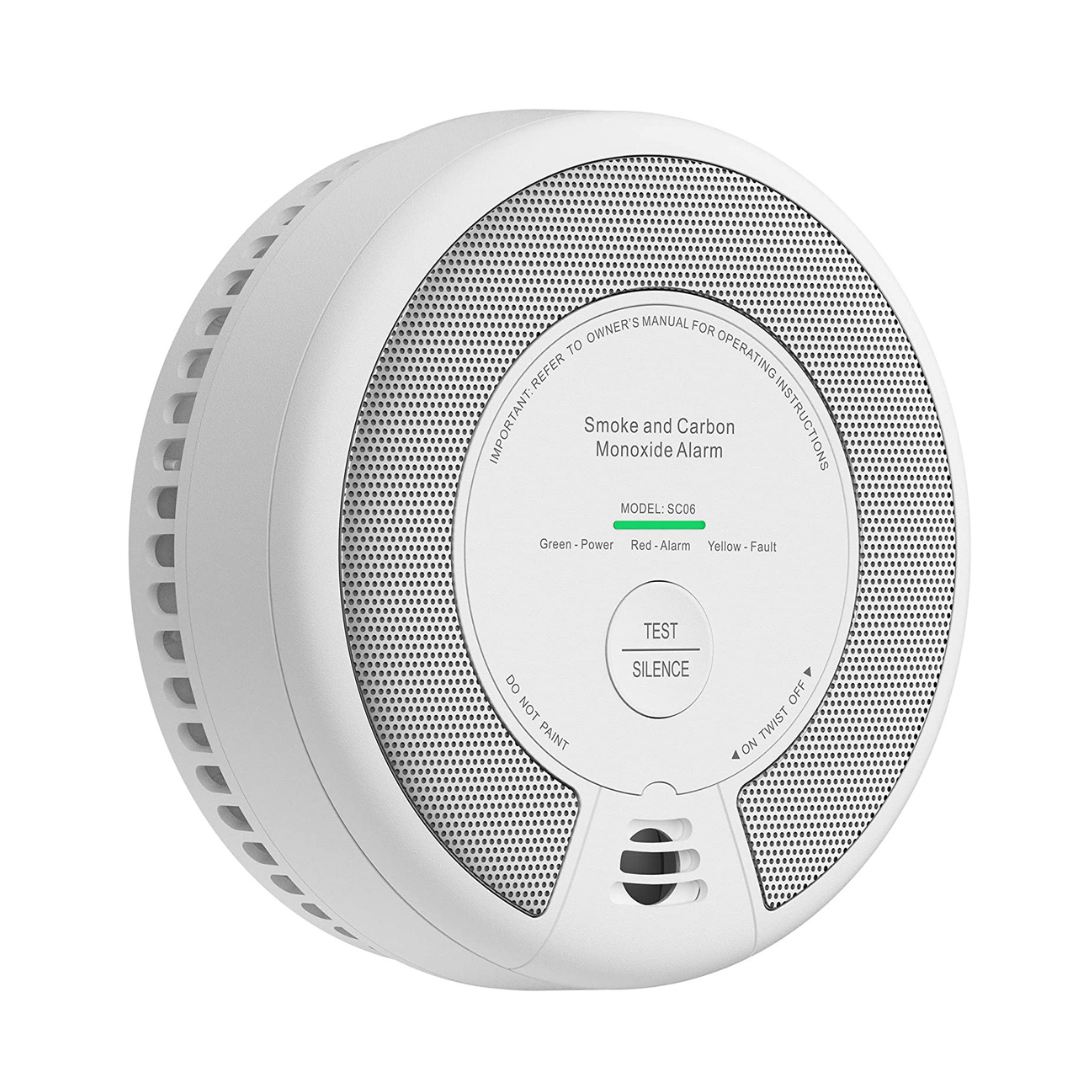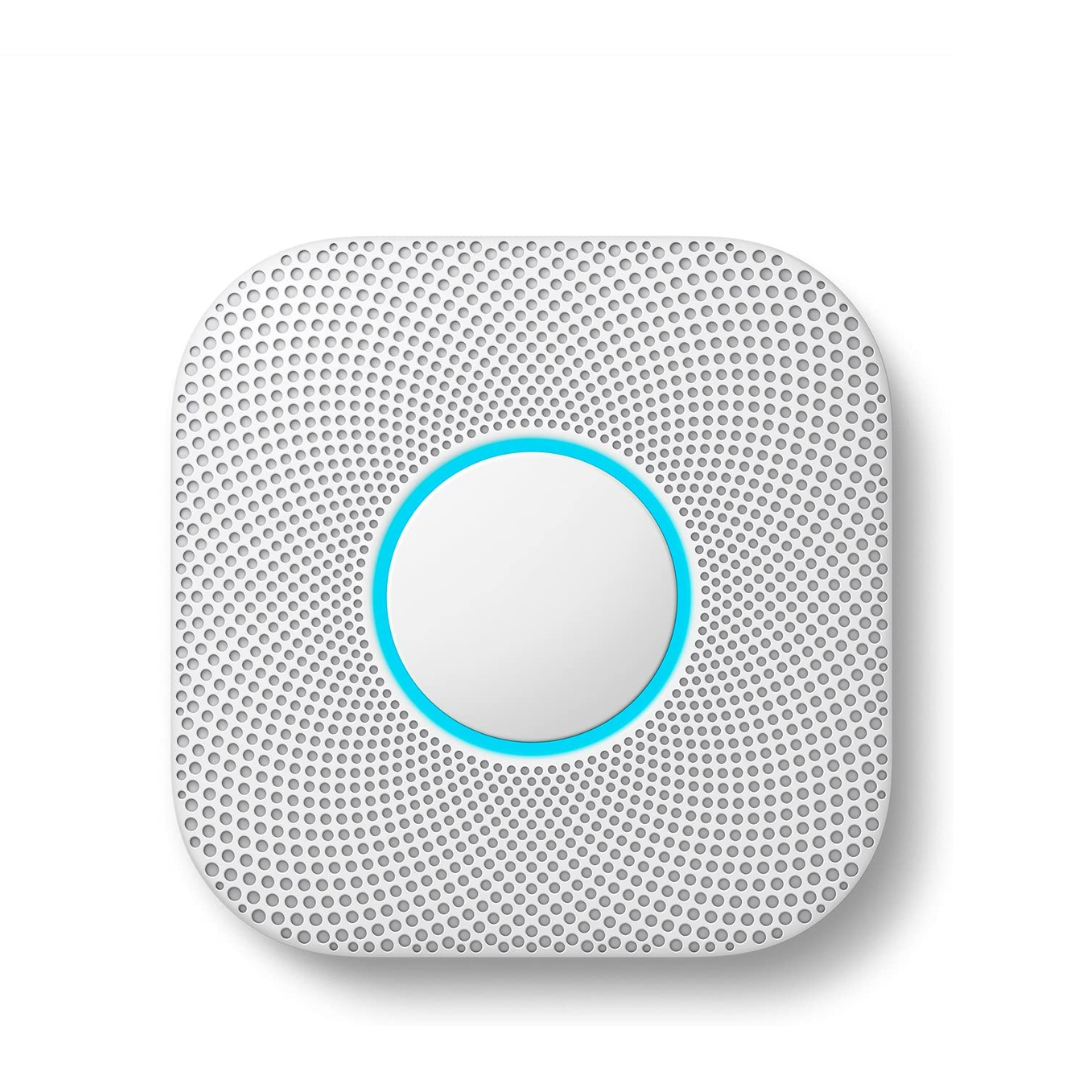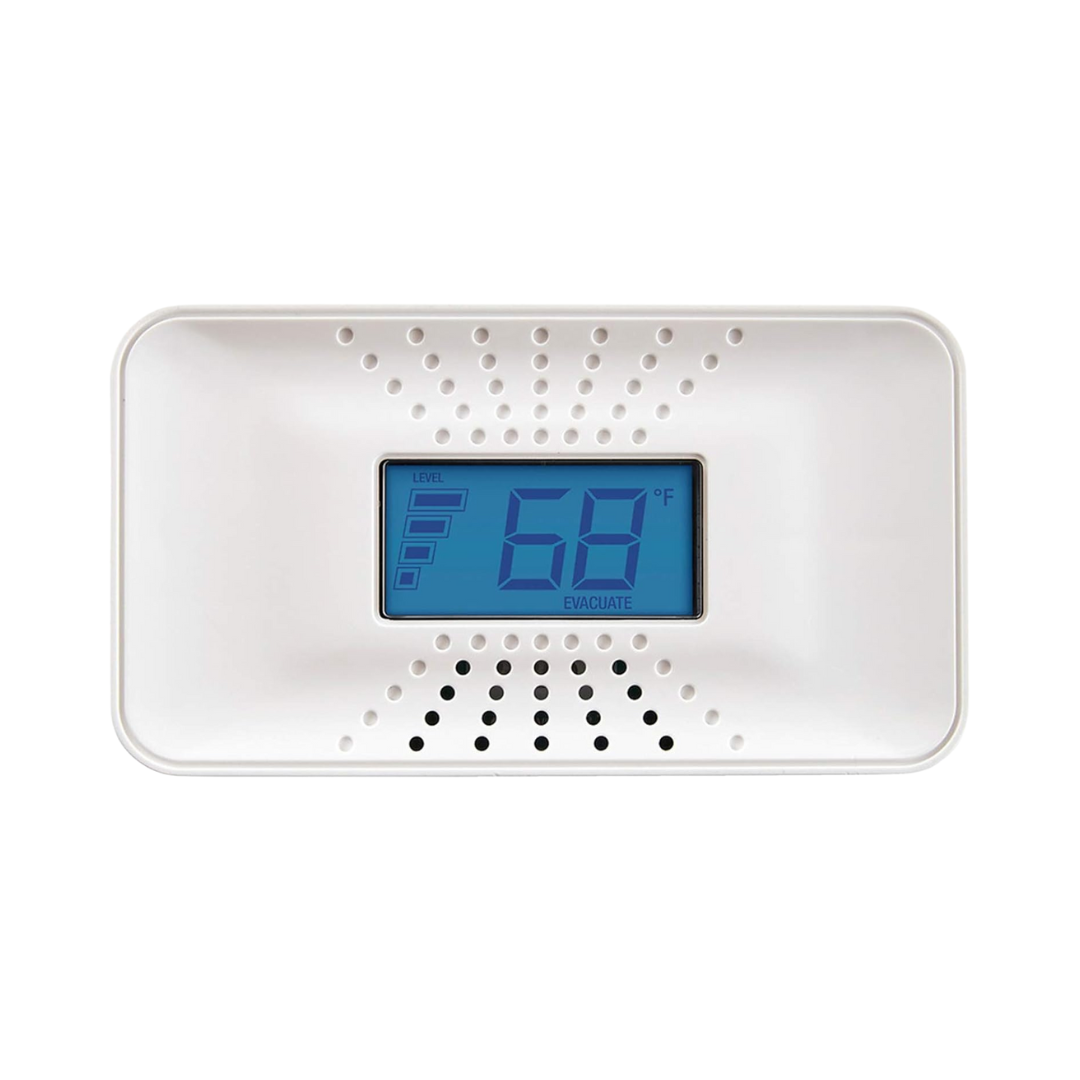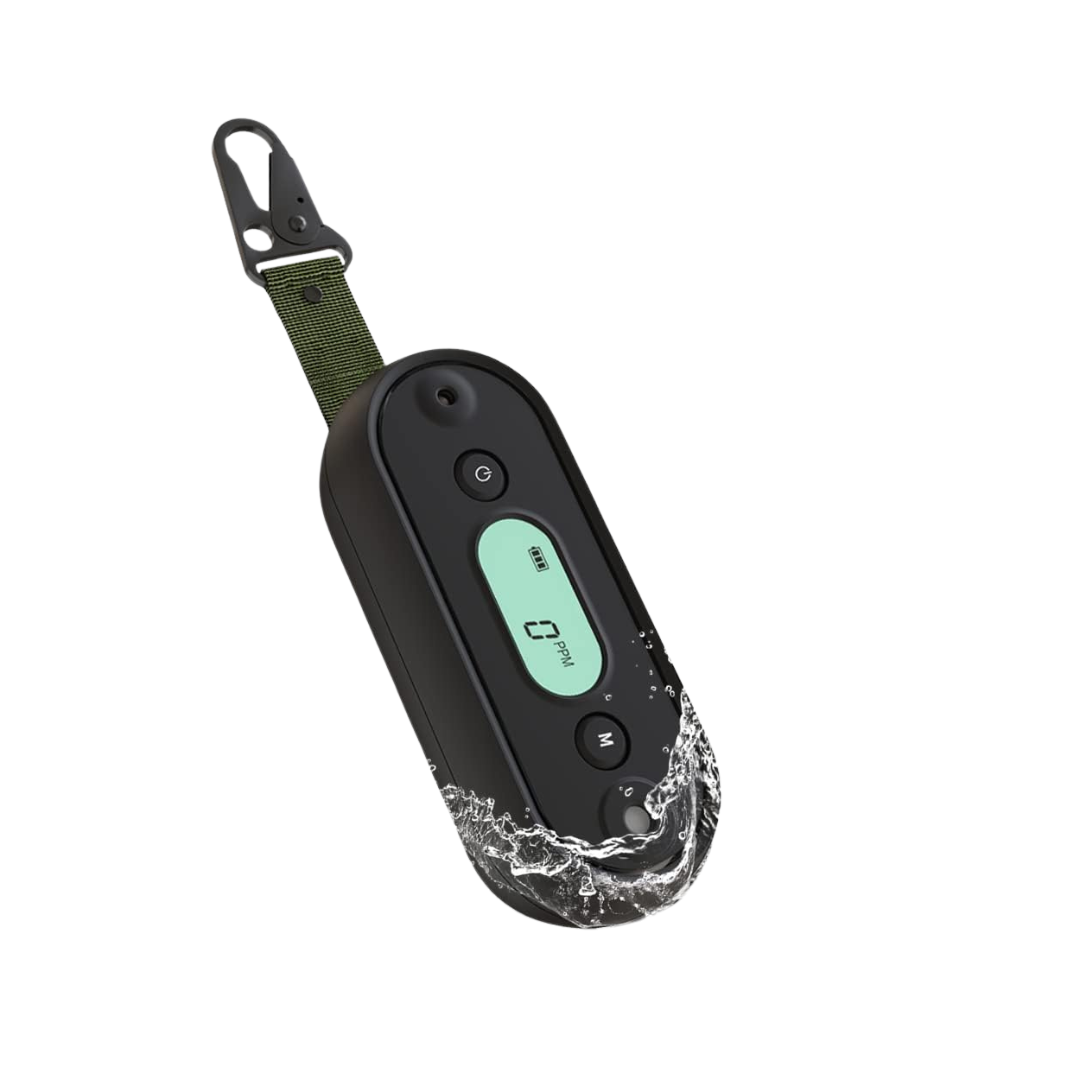We may be compensated if you purchase through links on our website. Our team is committed to delivering honest, objective, and independent reviews on home products and services.
Appliances around your home, such as fireplaces, boilers, and water heaters, can emit carbon monoxide if they don’t fully burn their fuel. Because carbon monoxide (CO) isn’t visible and doesn’t have a smell, you should install carbon monoxide detectors throughout your house to monitor the levels of this gas and improve your home safety.
A carbon monoxide detector should audibly and visually alert you when it detects a dangerous environment, so you can quickly get you and your family to safety. Some carbon monoxide detectors also come with smoke detectors built-in for an all-in-one device. However, base models typically cost around $30–70, with dual models or portable models sometimes ranging from $70–$150.
To help you find the best CO detector for your home, the This Old House team put together this guide to the best detectors on the market. Our choice for the best overall carbon monoxide detector is the First Alert Combination Smoke and Carbon Monoxide Detector for its light indication capability. Read our guide below for more about our top picks.
Top 7 Carbon Monoxide Detectors
- Best Visual Alerts: First Alert Combination Smoke and Carbon Monoxide Detector
- Best Pack Options: Kidde Smoke & Carbon Monoxide Detector
- Best Plug-In Detector: Kidde Nighthawk Carbon Monoxide Detector
- Best Lifespan: X-Sense Smoke and Carbon Monoxide Detector
- Best Smart Detector: Google Nest Protect Smoke Detector and Carbon Monoxide Detector
- Best Compact: First Alert CO710 Carbon Monoxide Detector
- Best Portable: GZAIR Travel Carbon Monoxide Detector
Compare Top Carbon-Monoxide Detectors
| Product | Detection | Alert Type | Design | Warranty |
|---|---|---|---|---|
| First Alert Combination Smoke and Carbon Monoxide Detector | Smoke and carbon monoxide | Visual and auditory | Battery-powered | 7 years |
| Kidde Smoke & Carbon Monoxide Detector | Smoke and carbon monoxide | Auditory | Battery-powered | 10 years |
| Kidde Nighthawk Carbon Monoxide Detector | Carbon monoxide | Visual and auditory | Cord-operated with battery backup | 10 years |
| X-Sense Smoke and Carbon Monoxide Detector | Smoke and carbon monoxide | Visual and auditory | Battery-powered | 5 years |
| Google Nest Protect Smoke Detector and Carbon Monoxide Detector | Smoke and carbon monoxide | Visual and auditory | Battery-powered | 2 years |
| First Alert CO710 Carbon Monoxide Detector | Temperature and carbon monoxide | Visual and auditory | Battery-powered | 10 years |
| GZAIR Travel Carbon Monoxide Detector | Carbon monoxide | Visual and auditory | Battery-powered | 1 year |
| Product | Detection | Alert Type | Design | Warranty |
Best Visual Alerts
What Customers Are Saying
Customer reviews we found said that this detector was easy to install, had a loud alarm, and offered a lot of features. Those who were disappointed with the product said that it malfunctioned after a few months of use.
“If you sleep through this, you’re probably dead and don’t know it! The installation was easy; just the wood panel at my place held it securely. It replaced another brand that was supposed to last ten years. Well, it didn’t, and rather than upgrade through them, I passed and bought this unit. It is loud, and I am hard of hearing. I think you will be satisfied with the installation and the easy-to-replace AA batteries.” —R. Elliott via Amazon
“We bought this smoke detector two years ago. It has just given off the three chirps, which indicates it is malfunctioning and needs to be replaced. The average life span of smoke detectors is 10 years, so this severely missed the mark. At least it let us know it was failing.” — Natalie De Moss via Amazon
Best Pack Options
What Customers Are Saying
Customers praised this device’s low noise level, long-lasting battery life and ease of installation. We also noted that those who didn’t enjoy their purchase said that they were missing parts, and others said they had an issue with false alarms going off consistently.
“They say you need to replace your smoke/CO detectors every 10 years. Our old detectors were in need of changing. We purchased these because we got a better value. These are hardwired and battery backup detectors. These also talk – if there is a fire, it will say fire, and if there is CO, it will say CO. You will know what the problem is when it goes off.” —CM Turner via Amazon
“Worked fine for a while, occasional false alarms, but was able to hush swiftly. However, I’m now trying to sell my house. As we were moving out, the alarms started sounding off for smoke and CO detection 24/7. Unable to turn them off with hush/test button, they are hardwired, so removing the battery was not an option. I had to turn off the breaker just to keep my sanity and that of the handymen working on the house. I will now have to fork out more money to get new ones.” —llbm via Amazon
Best Plug-In Detector
What Customers Are Saying
Our research showed that customers who left poitive reviews for this carbon monoxide detector said that it was easy to install and provided peace of mind. However, some reviewers had difficulty utilizing the manufacturer’s limited warranty.
“A bright LED is much better than the dim LCD displays. You can read it from across the room or in the garage. The default display is the CO level, the main data you are monitoring. Unlike other brands you don’t have to find and press a button to read the CO level. So you can monitor it for a trend before the level reaches the threshold that sets off an alarm. The others have temperature as the default display. I don’t buy one of these because I want a thermometer.” —Ted via Amazon
“I purchased the unit from Amazon in December 2021. It says 10-year warranty. It was beeping this morning, readings were at zero, so I figured it was the battery. Changing the battery didn’t help, plus the old battery was tested and was still good. The unit shouldn’t be malfunctioning after a year and change. I put a unit from the living room into the bedroom, and the CO readings are fine, so it’s the unit.” —Audrey Q. via Amazon
Best Lifespan
What Customers Are Saying
Most reviewers we found were satisfied with the detector, saying that it was well-made and a good value. A lot of customers appreciated the light indicator that was paired with the alarm. Those who were unsatisfied with their purchase said that mounting the device to a wall.
“These CO and smoke detectors are easy to install, and they really look nice compared to the 20-year-old ones we replaced them with. While testing them, there are distinct beeps for smoke and for CO. The 10-year battery is a great feature as well. I have bought enough to replace all of my old ones. —Kansas. via Amazon
“Even though this unit is not wired, I would expect that many (if not most) customers will be replacing wired detectors. Not having mounting holes that line up with a standard ceiling electrical box if a very poor design. I had to drill holes into very dry wallboard, and while the units are up, I am concerned about durability over many removals and re-installs for the frequent recommended cleaning.” —Jim Rogers via Amazon
Best Smart Detector
What Customers Are Saying
Several customers we found said that they loved the design, light feature, and motion detection of this device. We also noted that some of those who were unsatisfied with their purchase said that it was more difficult to install than basic devices because of the smartphone setup.
“I got this for the area where my child’s room is. With transitioning them to their own area, this gives me comfort way more than the normal detectors. I love that I can check status whenever and set up was very easy. Worth it!” — Ben via Amazon
“Installation was a nightmare. It turns out the install program crashes constantly on iOS. The only thing you can do is delete all Nest messages inside the app (seriously) and then it will only crash one in five times as opposed to 19 in 20 times. One installed detector refused to add itself to the network. It got fixed with the help of excellent user support, but it was a wasted hour.” — ITM via Amazon
Best Compact
What Customers Are Saying
We noted that customers who gave this product positive reviews liked that it had easy installation, and was perfect for small spaces. Several others liked that it had a 10-year battery. However, some reviewers did feel that the display was not large enough, and others found it difficult to display PPM numbers.
“Easy install. Nice appearance, reasonable size and even displays temperature.” —J. Samuelson via Amazon
“If you push the button a few times, you can access the memory, but it does actively display parts PPM. only temperature. This feature is the main reason I purchased this one. The info leads to this being a setting, but the instructions only cover checking the memory.” —Mathew Habicht via Amazon
Best Portable
What Customers Are Saying
Our research showed that several reviewers who liked this carbon monoxide detector were impressed with its easy portability and straightforward setup. Others were impressed with its vibration alert system when CO was detected. However, there were some reviewers who felt that swapping the battery was challenging and that it didn’t always reset properly after sensing exposure.
“This is a great device that is good for travel. My wife hears horror stories of people dying in resorts from carbon monoxide poisoning, so you bet we have to travel with one of these things. The buttons and controls are simple, and easy to use. It is not easy to accidentally turn on in a bag of luggage. The waterproof and durable features are great!” — Jake & Kait via Amazon
“Also, after my test readings the unit failed to completely reset to 0 (It also has a peak value memory, that was fine). It sat around 16 on the first time and 10 on the second test. This was even though I was in known clean air. To get it back to 0 I had to turn it off and on again and let it go through it’s calibration cycle. But the important part was that it did register and alarm.” — DoverNH via Amazon
What Are the Biggest Factors When Buying a Carbon Monoxide Detector?
Not every carbon monoxide detector is the same, and the best model for your home will depend on what features are most important to you. Some things you should keep an eye on are the power source of the device, its functionality, alert volume and display, and interconnectivity. Read our buying guide below for more information about carbon monoxide detectors.
Power Source
Carbon monoxide detectors are either battery-operated, plug-in, or hardwired.
- Battery: These detectors work even if your power goes out because they run on standard AA batteries or AAA batteries. However, the batteries only last about a year before they need to be replaced. The device will usually chirp to tell you when you have low battery. Occasionally, battery-operated detectors will use lithium batteries, which don’t need to be changed since they last for the entire lifespan of the detector.
- Plug-in: Plug-in models plug into an outlet. They usually come with a battery backup to continue working during a power outage.
- Hardwired: This type of detector is hardwired to your home’s circuitry. Similar to plug-in models, hardwired carbon monoxide models don’t work during power outages unless they have a battery backup.
Function
Most smoke alarms detect more than just carbon monoxide. The most common second function you’ll find in a carbon monoxide detector is smoke and fire detection, but you can also find devices that detect natural gas.
Display
Some detectors have a digital display that allows you to determine if there’s any carbon monoxide in your home, even if it’s a small amount that won’t hurt you. If your carbon monoxide detector doesn’t have a digital display, it’ll likely beep when the level of carbon monoxide in the air reaches a dangerous level.
Alert Volume
The CO detector should be loud enough to wake you up and to be heard from every part of the home, particularly in sleeping areas whenever there is a detection of CO poisoning. Most detectors have a CO alarm that’s at least 85 decibels. However, the alarm will be quieter from across the home, which is why it’s important to have more than one installed. Some alarms also include voice alerts notifications that describe what the specific alarm is.
Interconnectivity
As previously mentioned, you’ll need to install several carbon monoxide detectors in your home if it’s relatively large. This will help you hear the alarm from anywhere in your home and ensure that you’re getting accurate carbon monoxide readings throughout your home. If you purchase several of the same model, you’ll be able to connect the devices to ensure that if one detects carbon monoxide, all of them will beep to alert you.
Lifespan
The sensors in your detector will typically wear out after five to 10 years. Consider replacing your device around this timeframe.
What Could Cause a Carbon Monoxide Leak?
There are numerous things in and around your home that could lead to a carbon monoxide leak, making it even more essential to stay well-equipped with a high-quality, working carbon monoxide detector. Here are some of the biggest reasons why a carbon monoxide leak could occur.
- Faulty or poorly maintained appliances: Gas-powered furnaces, water heaters, stoves, ovens, fireplaces, and other fuel-burning appliances can release carbon monoxide if they are malfunctioning or not properly maintained. The most frequent cause is due to issues with ventilation, burner problems, or blocked exhaust flues.
- Inadequate ventilation: Proper ventilation is crucial for removing combustion byproducts, including carbon monoxide, from indoor spaces. If a home’s ventilation system is not functioning correctly or if there are obstructions in vents, CO can build up indoors.
- Cracked or damaged heat exchangers: In gas furnaces, heat exchangers are designed to separate combustion gases from the heated air circulated through the home. If the heat exchanger is cracked or damaged, it can allow carbon monoxide to mix with the indoor air.
- Blocked chimneys or flues: Chimneys and flues are responsible for venting exhaust gases safely to the outside of your home. If they become blocked or clogged with debris, it can cause a backdraft, allowing carbon monoxide to enter the living spaces.
- Using outdoor equipment inside: Using generators, grills, or other gasoline-powered equipment indoors or in enclosed spaces can produce high levels of CO. These items should always be used outdoors in well-ventilated areas.
- Vehicle exhaust in attached garages: When a vehicle is left running in an attached garage, carbon monoxide can seep into the living areas of the house. It is essential to open the garage door before starting the car and to avoid running vehicles inside the garage.
Frequently Asked Questions About Carbon Monoxide Detectors
Who is at risk of carbon monoxide poisoning?
If you have a carbon monoxide leak in your home, infants, young children, the elderly, and people with chronic heart disease, anemia, or respiratory problems are at a higher risk of carbon monoxide poisoning.
What are the symptoms of carbon monoxide poisoning?
Symptoms of carbon monoxide poisoning look similar to those of the flu. You may experience the following if you’re exposed to high CO levels.
- Dizziness
- Weakness
- Headache
- Upset stomach
- Vomiting
- Chest pain
- Confusion/disorientation
Am I supposed to test my carbon monoxide detector?
Yes. You should test your detector at least once a month. Most models will have a button on them that you can press. When you press that button, the device should sound the same alarm that would go off if carbon monoxide is detected.
Where should I put my carbon monoxide detectors?
You should have a carbon monoxide detector on every floor of your home and 15–20 feet from your furnace or another fuel-burning heat source. If you want more protection, you can place a carbon monoxide detector outside of every bedroom.
Why Trust The This Old House Team
This Old House has empowered homeowners for more than four decades with top-notch home improvement content in the form of television programs, print media, and digital content on its website and social media platforms. The This Old House Team focuses on creating in-depth product and service review content to help inform your purchasing decision for just about any item or resource that you might need for your home. The This Old House Team has written over 1,000 reviews on products in the home space, from cordless drills to kitchen trash cans, lawn mowers, and dining room decorations.
We recommend products in each review using an intensive research process, spending hours combing through the best available models on Amazon. For a product to make our list of top picks, it must hold a solid sales record on Amazon, have consistently positive customer reviews, and offer unique features, among other factors. After narrowing down our list of recommendations, we conduct additional research and sometimes in-person testing to ensure that the products meet our standards. Once we conclude the research phase, we craft a well-rounded, user-friendly article that includes our recommended products and additional information to help homeowners like you make the right purchase.
To share feedback or ask a question about this article, send a note to our team at reviews@thisoldhousereviews.com.
